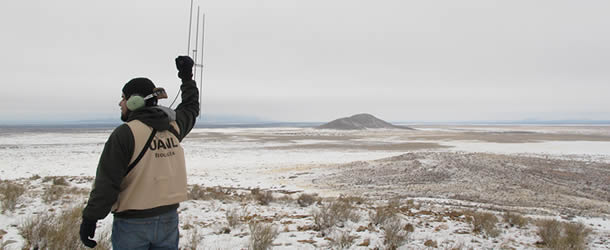Since 2007 SJV partner Rocky Mountain Bird Observatory has been leading a binational effort to inventory and monitor wintering grassland bird populations in the most important grasslands in the Chihuahuan Desert. This project has produced, for the first time, rigorous information on the distribution, density, and habitat use of nearly 30 grassland species throughout most of the desert. They have used this information to redraw the map of priority conservation sites and develop conservation tools for this region.
One of the projects that they are undertaking involves the use of radio telemetry to better understand overwintering survival and habitat use in Baird’s (Ammodramus bairdii) and Grasshopper sparrows (Ammodramus savannarum). They hope answer questions such as: Are birds utilizing an area with more food even though they are more exposed to predators? Do they require a certain percentage of grass cover for optimal survival? Are poorer condition birds utilizing low quality habitat? Knowledge such as this will aid us in developing habitat conservation and outreach strategies and predict and prepare for how birds will respond to land-use and climate change.
During this field season they have captured more than 65 sparrows and tracked between 15-40 sparrows daily. Project Field Team Leader Erin Strasser has written an excellent update, recently published on the RMBO blog. To learn more about what they’ve found, including some interesting discoveries about sparrow predation, head over to their website.

